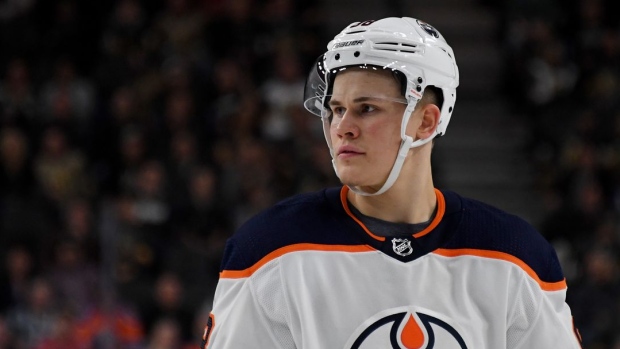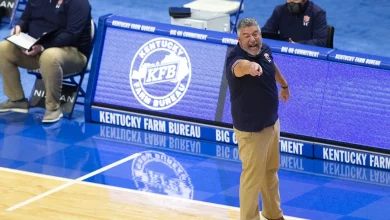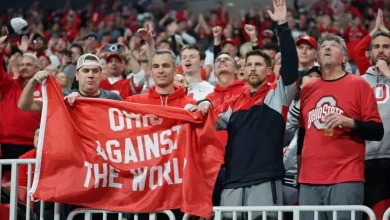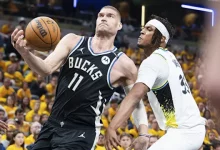The Edmonton Oilers may have given up too soon on young players like Taylor Hall, Jesse Puljujärvi, and Magnus Paajarvi.

The Edmonton Oilers, one of the most storied franchises in NHL history, have seen their fair share of ups and downs over the years. Despite boasting some of the most incredible talent the league has ever seen, such as Wayne Gretzky, Mark Messier, and more recently Connor McDavid and Leon Draisaitl, the Oilers have struggled to build a consistent winner. A major factor in this struggle has been the management and development of young talent.
Some of the most frustrating instances of these struggles have occurred when the Oilers gave up on young players who showed promise but ultimately didn’t have the chance to fulfill their potential with the team. Over the years, the Oilers have traded or moved on from some young players too soon, leading to the question: Did the Oilers give up on these players too early? In this article, we will explore three young players the Edmonton Oilers may have given up on too soon: Taylor Hall, Jesse Puljujärvi, and Magnus Pääjärvi.
Taylor Hall: The First Overall Pick
Taylor Hall, drafted first overall by the Oilers in the 2010 NHL Draft, was expected to be the cornerstone of a rebuilding team. As one of the most highly regarded prospects in recent memory, Hall had all the tools to be a superstar: speed, skill, and a goal-scoring touch. His time with the Oilers, however, was often marked by frustration, with the team struggling to find success despite Hall’s individual brilliance.
Hall made an immediate impact in his rookie season, scoring 22 goals and 20 assists in 65 games. He was one of the brightest young stars in the league, and many hoped that he would be the player to lead the Oilers out of their lengthy period of mediocrity. However, despite his efforts, the Oilers failed to make the playoffs during his tenure, and Hall’s frustration began to mount.
In 2016, after six seasons with the Oilers and multiple failed attempts at rebuilding, Hall was traded to the New Jersey Devils in exchange for defenseman Adam Larsson. The trade was met with heavy criticism from many fans and analysts, as it seemed like the Oilers were giving up on a generational talent in Hall at the peak of his powers. In New Jersey, Hall flourished, earning the Hart Trophy as the NHL’s Most Valuable Player in the 2017-2018 season. He would go on to score 39 goals and 54 assists in just 76 games, carrying the Devils to the playoffs and proving that he was the elite player everyone had expected him to be.
Meanwhile, Adam Larsson, the player the Oilers received in the trade, was a solid but unspectacular contributor. While Larsson’s defensive play was helpful, it wasn’t enough to offset the loss of Hall’s offensive output. The trade ultimately went down as a major miss for the Oilers, as they gave up on one of the most dynamic forwards in the league, and it raised questions about their long-term strategy.
Jesse Puljujärvi: The Once-Highly Touted Prospect
Jesse Puljujärvi, drafted fourth overall in the 2016 NHL Draft, was considered one of the most highly anticipated prospects to come out of Finland in years. His combination of size, skill, and hockey IQ made him a coveted prospect, and many saw him as a future star for the Oilers. However, Puljujärvi’s development with the Oilers was anything but smooth.
Puljujärvi began his NHL career in 2016-2017, but he struggled to adjust to the speed and physicality of the league. His confidence seemed to wane as he found himself on the team’s fourth line, playing limited minutes. Despite flashes of brilliance, including an excellent showing at the 2016 World Juniors, Puljujärvi couldn’t seem to find consistency in the NHL. The Oilers, eager to see results from their highly drafted prospect, grew increasingly frustrated with his development.
In 2019, after three seasons of up-and-down play with the Oilers, Puljujärvi and the team parted ways. Puljujärvi went back to Finland to play with Karpat, and it seemed that his time in Edmonton was over. The Oilers were unable to unlock the full potential of a player who had once been considered a future star, and many questioned whether they had given up on him too soon.
However, in the years following his departure from the Oilers, Puljujärvi began to find his form again. He returned to the NHL in 2021, and by that point, he had matured and refined his game. The 6-foot-4 winger showcased improved defensive play, better consistency, and more offensive production in his return to Edmonton. Puljujärvi’s second stint with the Oilers was far more successful, as he played on the team’s top six and showed flashes of the potential that had made him such a highly sought-after prospect.
Despite his success, the Oilers’ decision to move on from Puljujärvi earlier in his career raised questions about their ability to develop young players. While the decision to send him back to Finland may have been a necessary step for his personal growth, it’s hard to ignore the fact that Puljujärvi had the tools to succeed in the NHL, and with proper development, he could have contributed to the Oilers much earlier.
Magnus Pääjärvi: The Speedy Forward with a Bright Future
Magnus Pääjärvi, selected 10th overall in the 2009 NHL Draft, was once one of the Oilers’ most promising prospects. Like Puljujärvi, Pääjärvi was a European winger with size, speed, and offensive potential. At 6-foot-3, Pääjärvi had the combination of physicality and skating ability that scouts drooled over. His time in the Swedish Hockey League (SHL) further solidified his status as a top-tier talent, and he entered the NHL with high expectations.
Pääjärvi made his NHL debut with the Oilers in the 2010-2011 season, and he showed flashes of brilliance early on. In his rookie year, Pääjärvi scored 15 goals and 14 assists, a solid performance for a young player in his first season. He had the speed to keep up with the NHL’s elite players and the skill to create scoring chances. However, despite his promising start, Pääjärvi’s development stalled.
One of the key reasons for Pääjärvi’s struggles was his inability to adapt to the physical nature of the NHL. While he had the speed to compete, his size and strength weren’t enough to consistently fend off defenders, which hurt his ability to sustain offense. His defensive game also needed work, and as the Oilers struggled to find success during his tenure, Pääjärvi’s confidence began to dip.
In 2012, after just two seasons with the Oilers, Pääjärvi was traded to the St. Louis Blues in exchange for David Perron. The trade was controversial at the time, as the Oilers gave up on a young player with so much potential. The move to St. Louis didn’t immediately work out for Pääjärvi, but over time, he found his place in the NHL. While his career never fully blossomed into the superstar some envisioned, Pääjärvi carved out a respectable career as a depth player with stints in Ottawa, St. Louis, and the SHL.
Despite his success elsewhere, Pääjärvi’s time with the Oilers is remembered as a missed opportunity for the franchise. Had the Oilers been able to develop Pääjärvi’s game further, he might have become a key contributor to their success in the 2010s. Like Puljujärvi, his development was stunted, and the Oilers moved on too soon.
Why the Oilers Gave Up on These Players Too Soon
The common thread with all three players—Hall, Puljujärvi, and Pääjärvi—is that the Oilers gave up on them before they had the chance to fully realize their potential. In each case, there were mitigating factors that led to the Oilers’ decisions to trade or part ways with these young players.
1. Frustration with Rebuilding: During Hall’s tenure, the Oilers were in the midst of a lengthy rebuild, and management felt the pressure to make moves to accelerate the process. Hall, despite his individual brilliance, was unable to carry the team to the playoffs, and the frustration of missing the postseason year after year led to the decision to trade him for a more defensive-oriented player like Larsson.
2. Inconsistent Development: Puljujärvi and Pääjärvi both struggled with inconsistency in their development. Puljujärvi couldn’t find a fit on the Oilers’ roster, while Pääjärvi’s development stalled after a strong rookie campaign. In both cases, the Oilers were unable to give them the time and support they needed to grow into the players they eventually became.
3. Management Changes and Shifting Priorities: The Oilers’ frequent management changes over the years have contributed to their inability to effectively develop young players. New GMs and coaching staffs often brought in different philosophies that didn’t align with the development needs of the team’s young talent.









